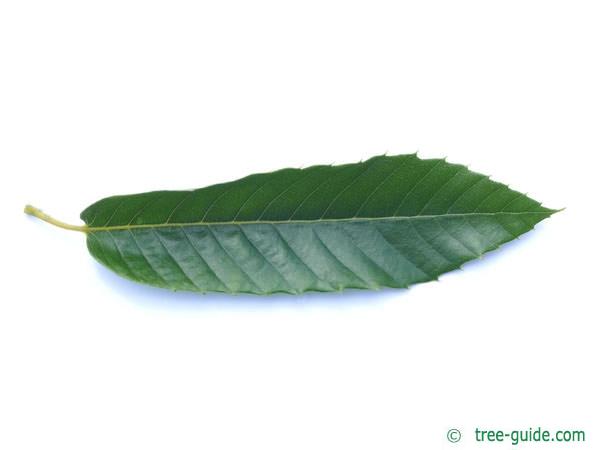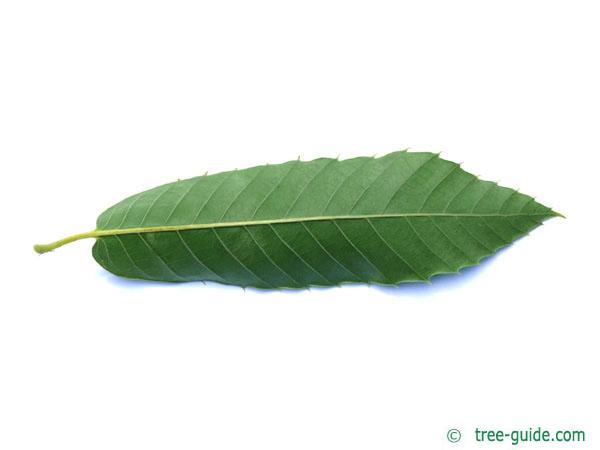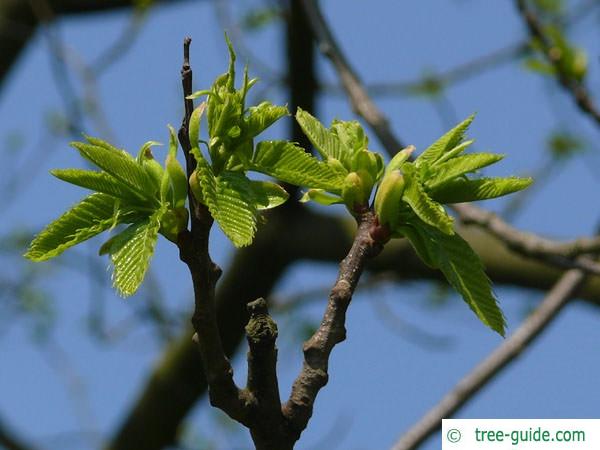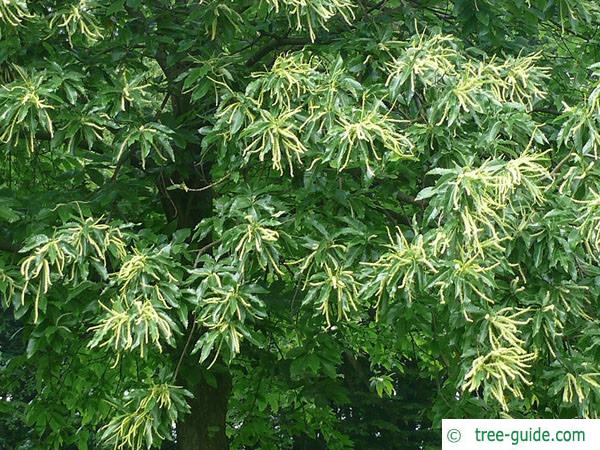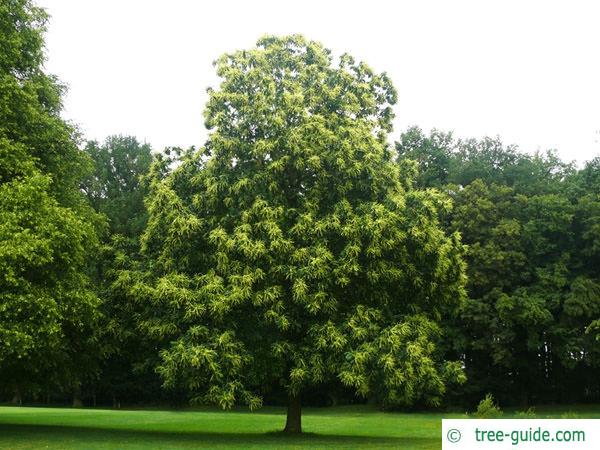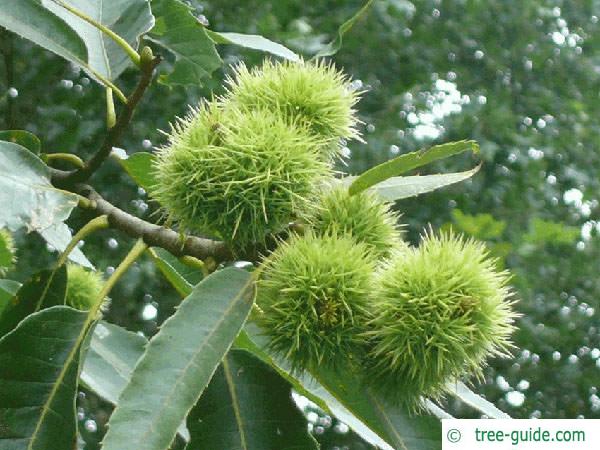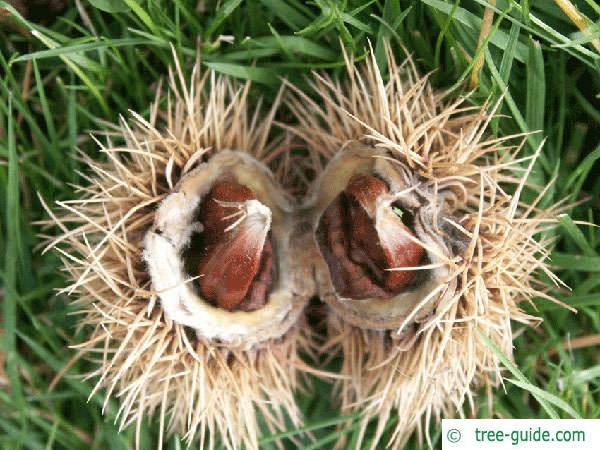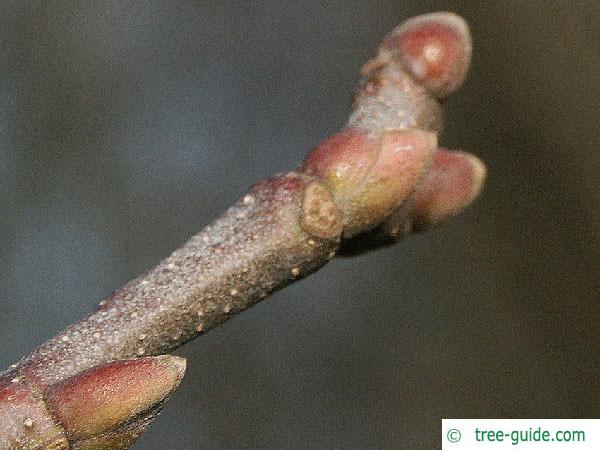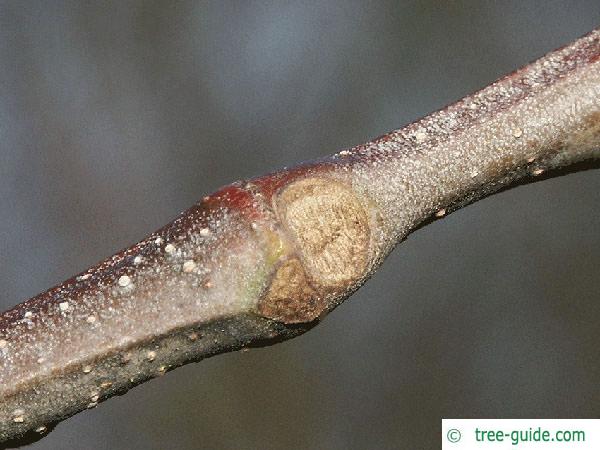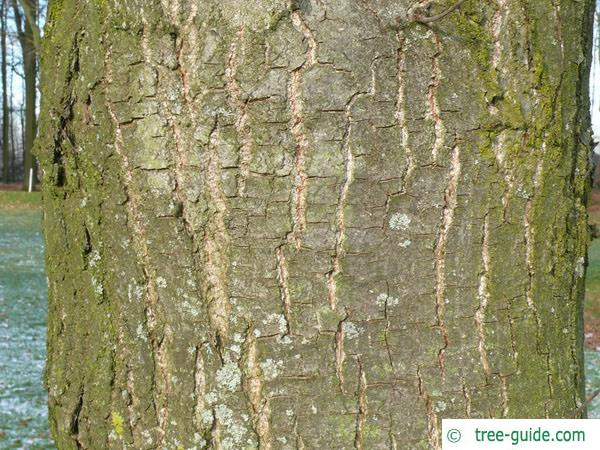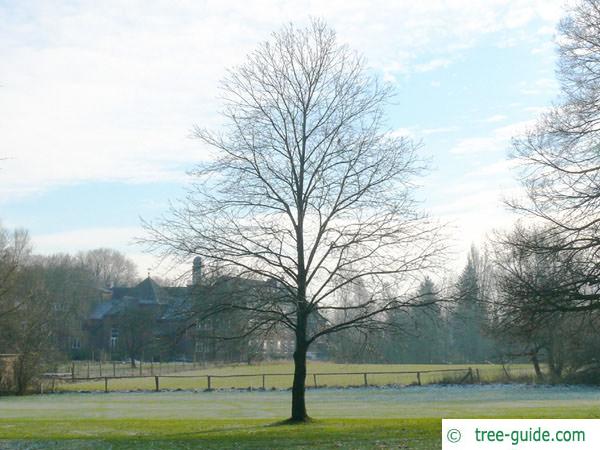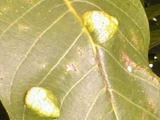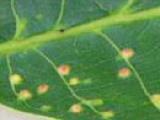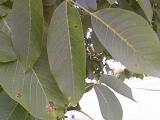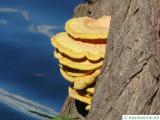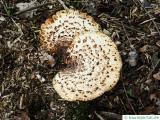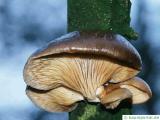Basisdaten
description:
The Chestnut is widespread in Europe and Asia, meanwhile also in other temperate zones. The chestnuts are consumed since ancient times by people. The tree can become very old.
Tree profile
name botanical:
Castanea sativa
other name:
Spanish Chestnut
other name:
Sweet Chestnut
family:
Beech family (Fagaceae)
species:
deciduous tree
height:
up to 30 m (99 ft)
leaf:
The leaves of Chestnut are firmly like leather, oblong and dark yellow and up to 20 cm (7.9 in) long. The leaf margin is serrated.
leaf shape:
oblong
leaf margin:
serrated
leaf position:
alternate
fall foliage:
yellow
flowering:
May – June
blossom color:
white
blossom description:
The flowers are greenish-white catkins, conspicuous.
gender distribution:
monoecious
fruit:
The nuts in the spiky shell are edible. Mostly two nuts are in a capsule.
branches:
Young twigs are tomentose. The buds are reddish and roundish.
bark:
The bark is gray - gray-green, first smooth and later fissured lengthwise.
root:
Deep-rooting plant, strong taproot forming the roots protrudes out of the treetops
location:
Sun to half-shade
soil:
sandy to sandy – loamy
ph value:
neutral to acid
usage:
single tree, planting in groups in parks







